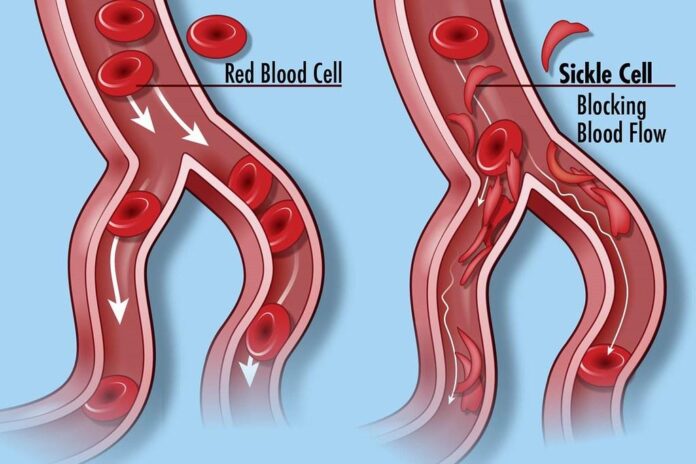
Sickle cell disease is a genetic disorder that affects the red blood cells, causing them to become rigid and sticky, taking on a crescent or “sickle” shape. This can lead to a range of symptoms and complications, from mild to severe. Understanding the symptoms of sickle cell disease is crucial for early diagnosis and management. In this article, we will explore the common symptoms of sickle cell disease and what to look out for.
1. Fatigue
One of the most common symptoms of sickle cell disease is fatigue. This can be due to the decreased oxygen-carrying capacity of the sickle-shaped red blood cells, leading to a lack of energy and stamina. Fatigue can impact a person’s ability to carry out daily activities and can be particularly noticeable during periods of increased physical exertion or stress.
2. Pain Crises
Pain crises, also known as vaso-occlusive crises, are a hallmark symptom of sickle cell disease. These are episodes of intense pain that can occur anywhere in the body, but most commonly in the bones, joints, and abdomen. The pain can be sudden and severe, lasting for hours or even days. In some cases, the pain can be so debilitating that it requires hospitalization and treatment with strong pain medications.
3. Anemia
Anemia is a common complication of sickle cell disease, caused by the reduced lifespan of sickle-shaped red blood cells. This can lead to symptoms such as pale skin, weakness, and shortness of breath, as the body struggles to transport enough oxygen to its tissues. Anemia can also cause dizziness, headaches, and an increased heart rate.
4. Swelling of Hands and Feet
Sickle cell disease can cause the blood vessels in the hands and feet to become blocked, leading to swelling, also known as dactylitis. This can be a sign of a painful blood vessel crisis and is more common in young children with sickle cell disease.
5. Infections
People with sickle cell disease are at an increased risk of infections, as the abnormal shape of their red blood cells can impair the body’s ability to fight off pathogens. Common infections in people with sickle cell disease include pneumonia, urinary tract infections, and skin infections. These infections can be more severe and require prompt treatment.
6. Delayed Growth and Development
Children with sickle cell disease may experience delays in growth and development, due to the impact of the disease on their overall health and wellbeing. This can manifest as delayed puberty, delayed or stunted growth, and delays in reaching developmental milestones. It is important for parents and caregivers to monitor a child’s growth and development closely and seek medical attention if any concerns arise.
7. Vision Problems
Sickle cell disease can cause damage to the blood vessels in the eyes, leading to a range of vision problems. These can include blurry vision, eye pain, and even vision loss. Regular eye exams are important for people with sickle cell disease, as early detection and treatment can help prevent long-term complications.
8. Jaundice
Jaundice is a condition in which the skin and whites of the eyes become yellowed, due to an excess of bilirubin in the blood. This can occur in people with sickle cell disease due to the breakdown of red blood cells. Jaundice can be a sign of a severe hemolytic crisis and should be evaluated by a healthcare professional.
9. Leg Ulcers
Leg ulcers are a common complication of sickle cell disease, especially in adults. These ulcers can be painful, slow to heal, and prone to infection. They are often located on the lower legs and can significantly impact a person’s quality of life.
10. Acute Chest Syndrome
Acute chest syndrome is a life-threatening complication of sickle cell disease, characterized by fever, chest pain, cough, and difficulty breathing. It is caused by the blockage of blood vessels in the lungs and requires immediate medical attention.
It is important to note that not everyone with sickle cell disease will experience all of these symptoms, and the severity of symptoms can vary widely from person to person. Additionally, some people may have few or no symptoms during periods of wellness, while others may experience frequent and severe symptoms.
For individuals with sickle cell disease, self-awareness and regular medical follow-up are essential for monitoring symptoms and managing the disease. It is important for people with sickle cell disease to have a healthcare team that is knowledgeable about the condition and its potential complications. This can include a primary care physician, hematologist, and other specialists as needed.
In summary, understanding the symptoms of sickle cell disease is crucial for early diagnosis and effective management. Fatigue, pain crises, anemia, swelling of hands and feet, infections, delayed growth and development, vision problems, jaundice, leg ulcers, and acute chest syndrome are all potential symptoms of sickle cell disease. It is important for people with sickle cell disease to be proactive in monitoring their health and seeking medical attention when symptoms arise. With proper management and support, people with sickle cell disease can live full and productive lives.












